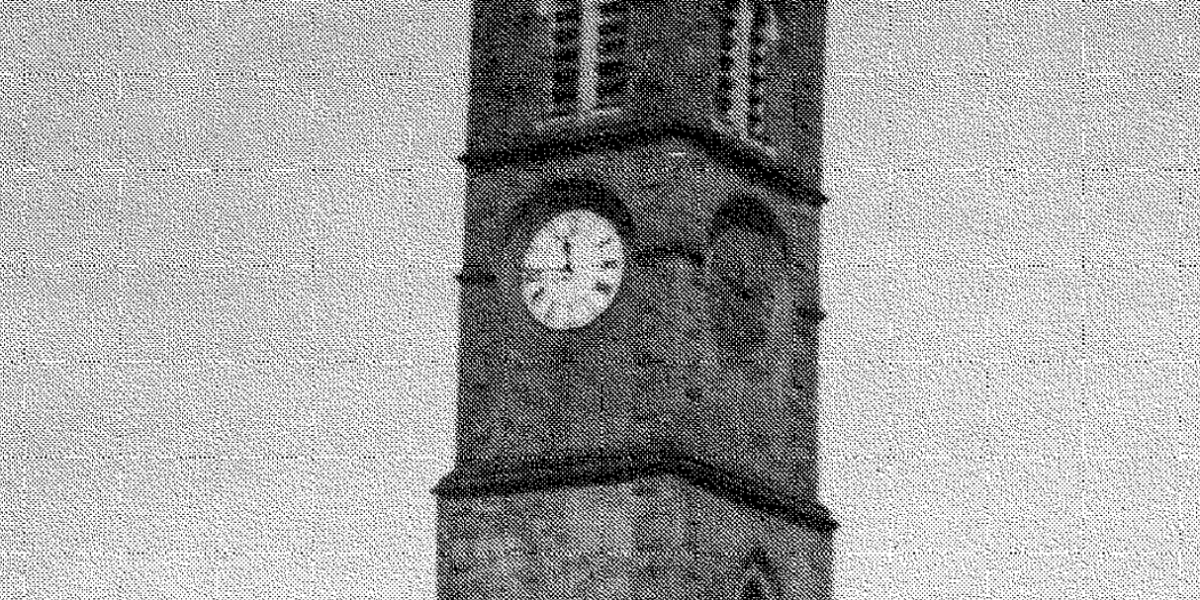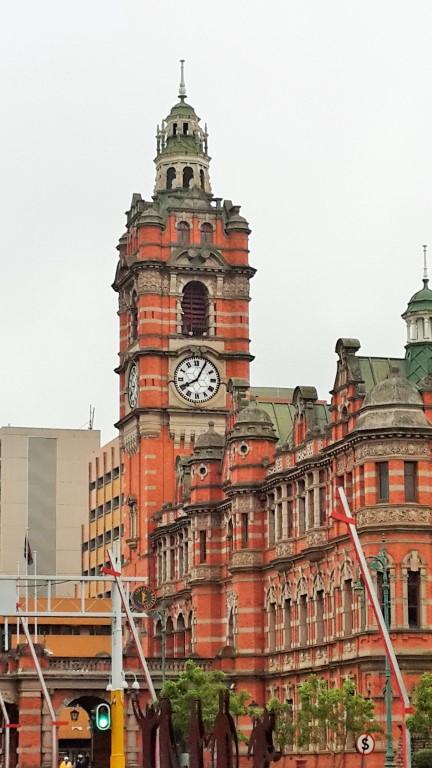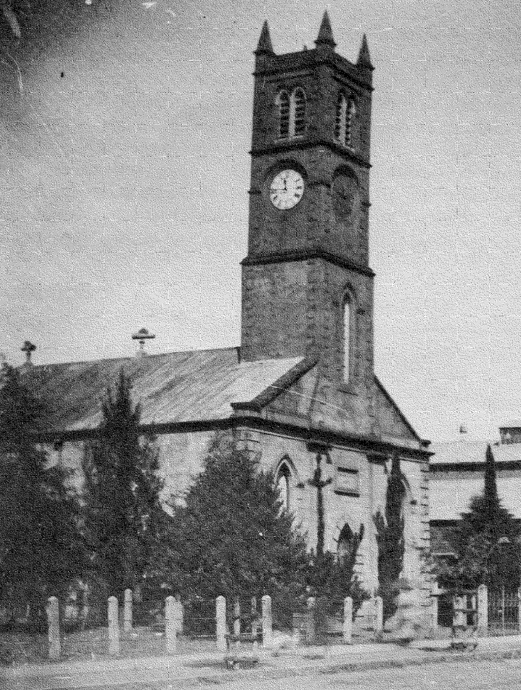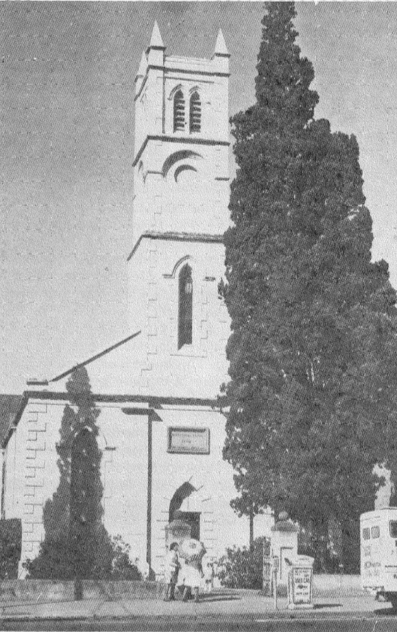
Disclaimer: Any views expressed by individuals and organisations are their own and do not in any way represent the views of The Heritage Portal. If you find any mistakes or historical inaccuracies, please contact the editor.
In the article below, Dr J. Pringle tells the inspiring story of the preservation of the St Johns Presbyterian Church clock in Pietermaritzburg. The piece was first published in the 1980 edition of Restorica, the journal of the Simon van der Stel Foundation (today the Heritage Association of South Africa). Thank you to the University of Pretoria (copyright holders) for giving us permission to publish.
"Ladies and gentlemen, we have called this special congregational meeting because we have reached a critical point in the history of our church," said Rev. John Gould Smith, Pastor of the St Johns Presbyterian Church Pietermaritzburg on 19th May 1897. "As you have seen from the Balance Sheet, we have a credit balance for the year of £3.13.5, but this surplus was only possible because repairs to our buildings were deferred. Your Board wish to submit three resolutions -
- that the mechanism of the clock in the First Presbyterian Church be sold. This clock is no longer required as the clock in the tower of the City Hall is sufficient for our town; it is a burden on the Church finances as we had to pay £10 last year for its maintenance and furthermore in a few years time it will deteriorate so much that it will be practically useless. We have received an offer of £120 from the Greytown Queen's Diamond Jubilee celebration committee.
- that the Manse be sold. This house is old, inconvenient and is a continual source of expense to maintain;
- that the building of the First Presbyterian Church in which the clock is located be sold."
All these resolutions were adopted unanimously.
Pietermaritzburg City Hall (The Heritage Portal)
The decision to sell the First Presbyterian Church after the clock was removed in 1897 was not carried out at that time for reasons unknown. It was sold to the Government in 1942 and used to accommodate the local section of the Department of Pensions and Social Welfare. The Manse was sold and passed into private ownership, but was unoccupied for many years. It recently changed hands and will be faithfully restored to its former elegance and used as prestige offices.
The land on which the First Church was built, together with three adjoining plots was a gift from the Natal Government in 1851. The building was started in 1852 but was delayed owing to lack of funds and was only completed in 1854. One of the conditions of the gift of land was that a clock should be installed in the tower. Many years passed before this condition was fulfilled.
In 1870 the congregation split and the breakaway section built the new St Johns Church in Longmarket Street. In 1875 the tower of the First Church was strengthened and the clock was installed. The clock fulfilled its role to the community for 22 years until it was sold.
The First Presbyterian Church Pietermaritzburg about 1890. The clock functioned in the Tower from 1875 to 1897 (via Restorica)
In Greytown it was re-erected in the tower of the Town Hall in the Queen's Jubilee Year. Despite all the predictions about its worn-out mechanism, it continued to function efficiently until 1970. In that year the clockwinder died; he had climbed that tower once every week for years to wind up the weights by hand and adjust the time. Soon after this, one of the cogs was stripped which created another problem. The Town Council was unable to replace the winder or the cog so it was agreed to acquire a new clock. The old clock was handed over to the local Museum where the jumbled parts were dumped in a heap at the end of a passage. It was intended to erect a tower in the Museum grounds for the clock, but this was deferred when the Curator, Mr. Duminy, died.
In 1975 I visited the Museum and learnt about the history of the clock. At the next meeting of the Regional Committee of the Foundation, the acquisition, repair and re-erection of the clock in its original tower of the First Presbyterian Church, Pietermaritzburg was approved as a project. The Regional Committee appealed to the members in Natal for funds to carry out this project and R649 was donated. The clock was bought back from the Greytown Municipality for almost the same amount as it was sold 80 years earlier. At this point the mechanism of the clock was transported from Greytown to Conac Engineering Works in Pietermaritzburg. While engineers were sorting out the bits and pieces the committee examined other problems. It was decided to replace the manual winding by an electric motor which wound up the weights automatically and regularly. The numbers on the four faces of the clock were repainted. Electric cables were installed up the tower.
St Johns Presbyterian Church Tower was without clock from 1897 to 1978 (via Restorica 1980)
The engineers informed me that the clock was ready for installation and I asked for an estimate of cost as we had very little money. They told me it was difficult to calculate. This cost on such an unusual job and the financial aspect would be dealt with later. Several more requests always produced the same answer, so I gave the go ahead. The installation took several days and an extension ladder from the City Fire Department was also used. Days dragged on but all attempts to get the clock going had failed. Apparently the original pendulum rod was lost and they had improvised to the best of their ability. Eventually they asked to be relieved of the responsibility of getting the clock going. I awaited their account with some trepidation and it was a shock. It amounted to R3 029 and against this we had a paltry R15 in the Clock Fund. Our Chairman, Dr. A.F. Tarr, who was also Mayor, and I interviewed Mr. Eugene Ege, Managing Director of Conac Engineering, and explained our predicament. He called in his accountant and told him to rectify the statement according to previous instructions. In the revised account the Company had generously donated R2 000 and the Foundation paid the remainder.
Although the financial problems were resolved, the clock remained moribund. Per chance I heard about Chris Morewood, Senior Workshop Technician at Natal University whose hobby was repairing church clocks. Chris was delighted to take over this clock and was given authority to do the repairs in the workshop provided it was undertaken between official jobs. He replaced the pendulum and several worn cogs but the timing took several months to adjust. Eventually Chris informed us that the clock was in working order. On 1 December 1978 a special ceremony was arranged.
Chris had set the hands at 5 o'clock and was perched in the top of the tower among the works. At the base of the tower the Mayor, Dr. Tarr, and members of the Committee had gathered. On the stroke of 5 p.m. the Mayor unveiled the descriptive plaque, we shouted to Chris and he started the pendulum. The old clock was back in action, the same as 80 years ago.
After this ceremony we were all invited to the Mayor's Parlour to celebrate. Chris undertook to maintain the clock until we could make satisfactory arrangements. As the building was State property and maintained by the Public Works Department the Foundation agreed to donate the clock to the State as it formed a permanent fixture in the building. In the reply the Department of Lands informed us that they could find no evidence that the State owned the church building and therefore could not accept our donation! We located the number of the transfer deed in the local Deed Office and again asked them to accept our donation. Months went by without any reply. We asked if they had come to any decision and back came the answer: we have lost your file please resubmit your application. The third time we were lucky. Like the story of Cinderella it all ended happily.
Comments will load below. If for any reason none appear click here for some troubleshooting tips. If you would like to post a comment and need instructions click here.



